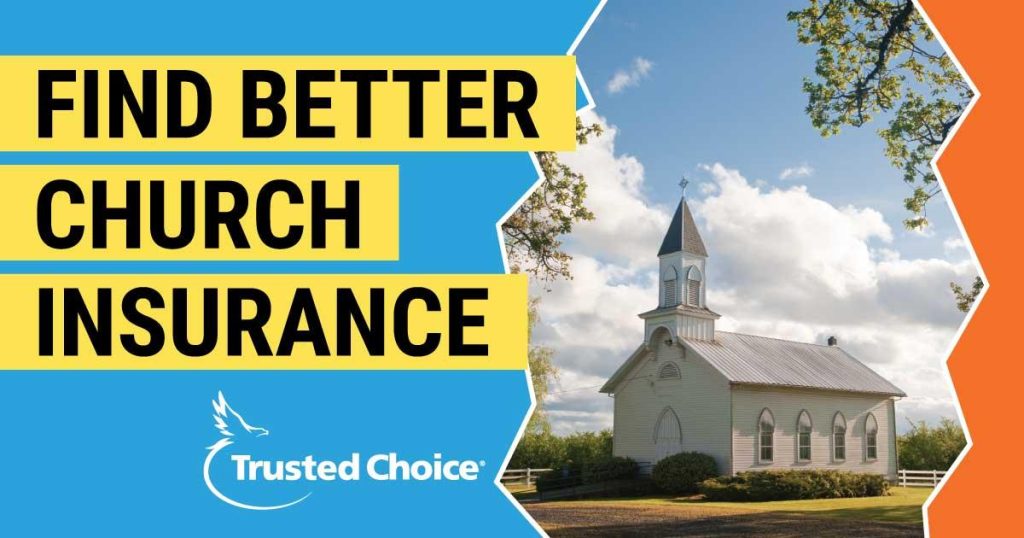When faith communities face unexpected trials—whether it’s damage to a cherished sanctuary, a sudden accident during a church event, or the heartbreak of legal challenges—insurance often becomes the unseen hero holding everything together. In those fragile moments, when hearts are heavy and uncertainty looms, having the right coverage isn’t just a financial safety net; it’s a lifeline. It’s what allows congregations to rebuild, to heal, and to keep their mission alive. In this article, we’ll explore the powerful role insurance plays in helping churches navigate their crisis moments, turning potential devastation into stories of resilience and hope.
Table of Contents
- Understanding the Emotional Impact of Crisis on Church Communities
- The Critical Role of Insurance in Protecting Sacred Spaces and Ministries
- Navigating Insurance Options to Safeguard Your Church’s Future
- Practical Steps to Strengthen Your Church’s Crisis Preparedness Through Insurance
- In Summary
Understanding the Emotional Impact of Crisis on Church Communities
When a crisis strikes a church community, it’s not just the physical building or financial resources that are affected—there is a profound emotional toll that ripples through every member. The sanctuary, often seen as a refuge, suddenly becomes a focal point of uncertainty and grief. Congregants may feel a deep sense of loss, fear, and vulnerability as they witness their spiritual home face damage or upheaval. This emotional distress can create an overwhelming barrier to healing, unity, and moving forward together.
Insurance steps in as more than just a financial safety net during these moments—it provides hope and reassurance. Knowing that there is a structured plan to address recovery allows church leaders and members to focus on emotional rebuilding and spiritual care, rather than spiraling into despair. Key emotional benefits include:
- Stability: Assurance that losses will be managed reduces anxiety and fosters a sense of security.
- Community resilience: Facilitates swift restoration of gathering spaces, helping to reunite the community physically and emotionally.
- Empowerment: Enables leadership to make confident decisions about recovery without being paralyzed by financial fears.
The Critical Role of Insurance in Protecting Sacred Spaces and Ministries
When unforeseen challenges strike, insurance stands as a steadfast guardian, ensuring that sacred spaces and ministries continue their vital work without interruption. Beyond just policies and premiums, it represents a promise — a commitment to preserving the sanctity of faith and community. From protecting historic church buildings against natural disasters to covering liabilities during large gatherings, insurance acts as a financial safety net that cushions the blow of unexpected crises. It empowers leaders to focus on healing and outreach instead of the overwhelming stress of recovery costs.
Consider the many facets of protection insurance offers:
- Property coverage safeguarding sacred architecture and valuable artifacts.
- Liability protection shielding ministries from legal claims during community events.
- Business interruption insurance helping sustain operations when normal functions are disrupted.
Each element weaves together a tapestry of resilience, allowing ministries not just to survive but to emerge stronger. In moments of crisis, these protections are far more than financial; they carry hope, renewal, and the unwavering continuation of a spiritual mission.
Navigating Insurance Options to Safeguard Your Church’s Future
Practical Steps to Strengthen Your Church’s Crisis Preparedness Through Insurance
In moments of crisis, having a solid insurance strategy can transform uncertainty into resilience. Start by conducting a thorough assessment of your church’s unique risks—anything from natural disasters to liability concerns should be on your radar. Engage with insurance professionals who specialize in faith-based organizations to craft policies that truly reflect your needs. Key coverages to prioritize include:
- Property and casualty insurance protecting sacred spaces and equipment
- General liability to cover unforeseen accidents during events
- Business interruption insurance ensuring continuity of services
- Cyber liability insurance safeguarding digital outreach and data
Next, empower your leadership and community by creating clear protocols tied to insurance claims and emergency responses. Regularly review and update policies to keep pace with evolving risks and church growth. Transparent communication about coverage not only builds trust but also fosters peace of mind—reminding your congregation that in the darkest hours, protection and recovery are within reach. After all, insurance isn’t just paperwork; it’s the promise of hope and security, wrapped in preparation and love.
In Summary
In the unpredictable moments when a church faces a crisis—whether it’s damage to the building, unexpected legal challenges, or sudden financial strain—insurance stands as more than just a policy. It becomes a lifeline, a source of hope and stability that allows communities to heal, rebuild, and continue their mission. By understanding and embracing the protective power of insurance, churches can face adversity with courage and confidence, knowing they aren’t alone. After all, faith is about perseverance, and having the right support behind you makes all the difference when it matters most.





